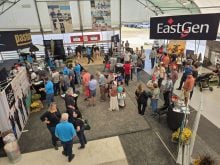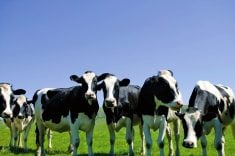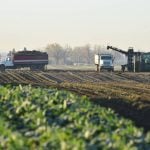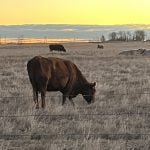The revolutionary ramifications of breeding beef genetics to dairy cows are remaking supply chains. That brings new opportunities and challenges.
The University of Guelph’s Dr. Michael Steele got the attention of attendees at the recent Dairy Cattle Industry Forum when he showed a line of antibiotic treatments used at one farm that raises weaned dairy calves for beef.
His point was that treatments could draw negative attention from consumers if the dairy sector doesn’t address challenges in crossbreeding its animals for the beef supply chain.
Read Also
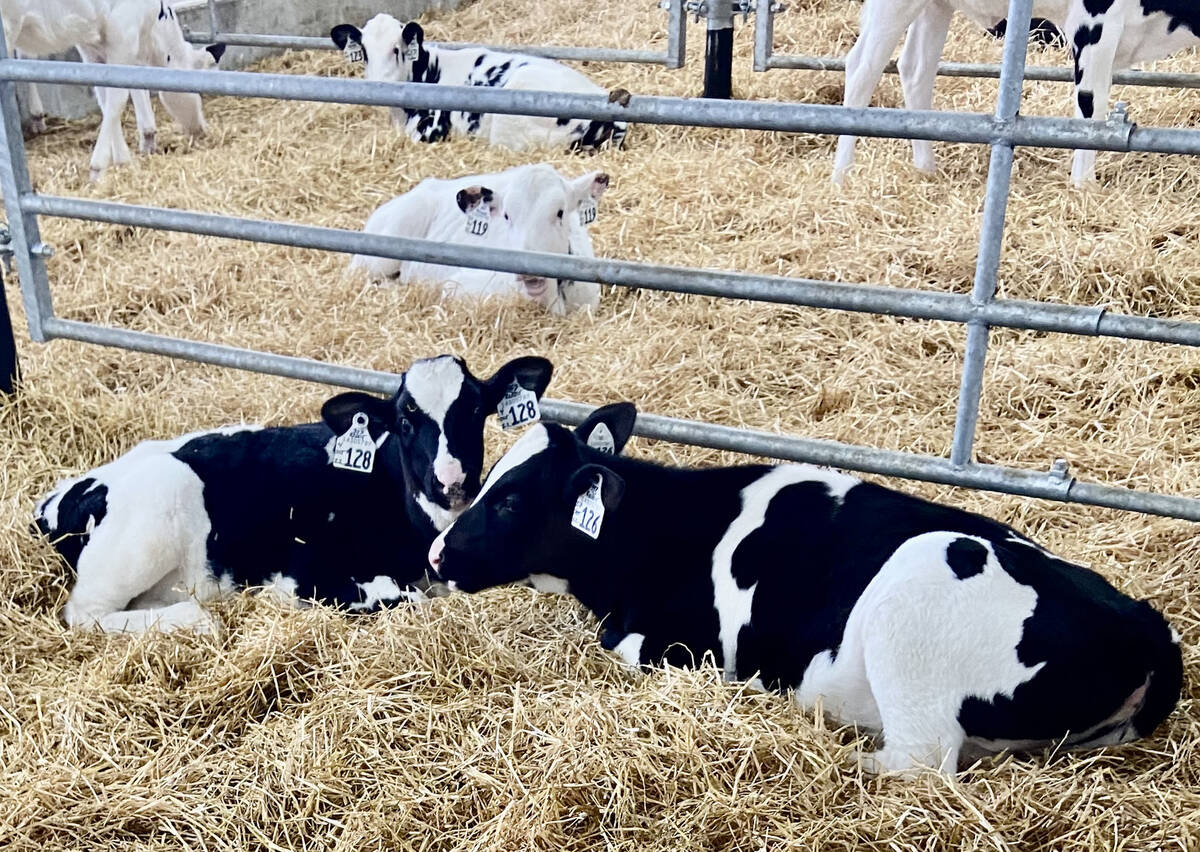
Back to the drawing board for sexed semen fertility ratings
Lactanet, the national genetic evaluation and dairy data provider, goes back to the drawing board with its sexed semen fertility rating index prototype.
“I see a lot of opportunities here,” Steele told Farmtario after the presentation, which was co-hosted by Lactanet and Semex. “But if we don’t solve our issues now,” – including high incidence of illness and death among crossbred calves – “it won’t evolve into what it could become.”
Beef-on-dairy breeding strategies are becoming more common on Canadian dairy farms. The number of crossbred calves entering the beef supply chain has risen significantly in the past five years. Dairy farmers can now breed their top females, often genomically identified, to sexed semen so they have a higher likelihood of producing females. As a result, they don’t need dairy animals from the rest of their cows and are breeding them for beef.
Why it matters: Beef derived from dairy cattle could form a significant portion of the beef produced in Ontario, and requires dairy farmers to learn how to breed and produce beef animals.
Meat from dairy crossbred animals can grade well, provide a good eating experience for consumers and it can be highly consistent. However, dairy calf practices vary greatly.
There is also more revenue for dairy farmers who sell beef-sired calves compared to returns in the highly variable veal sector.
Steele has a friend who milks about 100 cows and generates approximately $50,000 more revenue annually by raising his own dairy\beef crosses.
“Some farmers, big and small, have had success rearing these calves from start to finish,” he told Farmtario. Some now specialize in raising cross-bred dairy calves and advertise in the farm press to get supply for their barns.

Even on the traditional beef side, Steele has heard from feedlot operators who like the consistency of dairy-beef crosses. Some who have adjusted their feeding programs to reflect the differing genetics now send them to slaughter at 14 or 15 months at 1,600 pounds.
“They can’t get enough of these calves,” said Steele, because consistency appeals to packers and their other customers.
Climate impact
Canfax executive director Brenna Grant leads the organization’s research arm, which led an effort by the beef sector to adopt a lifecycle assessment methodology that reflects what happens on Canadian ranches and feedlots.
Lifecycle assessments show that Canadian dairy and beef sectors have significantly lower impact on greenhouse gas emissions than other countries in the world.
“If you don’t want the media saying you are simply the global average – or worse, equal to the world’s biggest (greenhouse gas) contributor – you need to do your own life cycle assessment,” said Grant, noting dairy farms are significantly lower contributors of greenhouse gas emissions than beef operations.
Grant agreed with Steele that, when it comes to enteric methane emissions, the outcome from raising calves on most dairy farms is better than in most Canadian beef settings. That’s because the nutritional regimes on dairy farms typically aim to optimize feed efficiency instead of using whatever forage is available.
In fact, she says in the United States, beef on dairy crossbreeding “is playing a big role” in efforts to bring the agriculture sector into compliance with climate change action goals. She recently heard a researcher from Texas A&M University talk about the lower carbon footprint resulting from good feed efficiency and higher average daily gains achieved by calves in dairy settings.
Steele says he feels drawn to the topic in part due to his expertise in what he calls “nutritional programming,” a field that has seen more research in the dairy sector than the beef sector.
“Scientifically, I just find it fascinating because you can change the character of these beef-dairy cross animals at so many points,” says Steele, listing ration changes, colostrum manipulation and feed changes that influence marbling as examples.
Record-keeping is also better, in general, on dairy farms, and artificial insemination is more common.
“We can change populations very quickly in the dairy industry” compared to the beef side, he said. Breeding and feeding can be adjusted to meet market demands and, with year-long breeding compared to seasonal breeding in much of the beef sector, supply can be consistent year-round.
“The market can tell us that consumers are looking for a certain type of animal and, within a year, we can have those calves on the ground,” Steele said. “All of a sudden there’s value in a young calf.”
He believes many Canadian dairy farmers who breed their cows to beef sires don’t worry about beef carcass quality or helping consumers decrease the carbon footprint of their food choices. All they’re worried about is breeding their top cows to top-level dairy sires and breeding the rest of their herd to calving-ease beef sires.
The result is a lot of small calves that don’t gain well and aren’t competitive in a feedlot. From the information Steele has gathered from feedlot operators and dairy farms, “what we’re stuck right now with is a situation where crossbred calves still get sick too often and they still die too much.”
Morbidity rates are higher, antibiotic use is higher and mortality is higher than for calves raised as dairy replacements.
“It’s going to be very difficult to convince consumers that we’re doing a good job raising these animals if they know that five to 10 per cent of them die in the first month of life,” Steele said.
He is submitting an application that he hopes will result in five years of federal funding to follow groups of cross-bred Holstein/Angus and purebred Angus calves from conception to the abattoir. He plans to focus on health outcomes during the early weeks of life and during transport.
When the project finishes, he hopes it will contribute to ongoing research that tracks the carbon footprint of raising beef-on-dairy crossbreeds.





